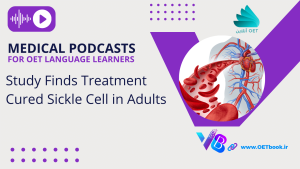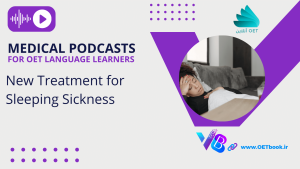Transcript
This is the VOA Special English Health Report.
Rheumatoid arthritis is a painful disease that can destroy joints. Women are three times more likely to get it than men.
Rheumatoid arthritis is considered an autoimmune disease, a disease where the body attacks healthy cells. The exact cause is unknown. But in a recent study, an experimental drug showed signs of halting the disorder in laboratory mice.
Harris Perlman is a medical researcher at Northwestern University in Illinois. He says normally a protein in healthy immune cells causes the cells to die after they attack an invading virus or bacteria. But in rheumatoid arthritis, that protein is missing in some immune cells. Instead, the protein builds up in the joints and attacks cartilage and bone.
Professor Perlman developed what he calls a suicide molecule. It acts like the protein that directs cells to self-destruct. He says the suicide molecule halted and even reduced rheumatoid arthritis in seventy-five percent of the mice in the study. He believes the treatment could also work in people.
Current treatments for rheumatoid arthritis can reduce pain, but they do not work for everyone. They also have side effects such as an increased risk of infection. Harris Perlman says the new treatment produced no major side effects in the mice.
The study appeared earlier this year in the journal Arthritis and Rheumatism.
Arthritis is not a single disease. The MedlinePlus Medical Encyclopedia, a United States government website, says there are more than one hundred different kinds.
Arthritis produces pain, swelling and limited movement in one or more joints. It involves the breakdown of cartilage. Joints need cartilage for smooth movement and to absorb shock when you put pressure on a joint.
Arthritis can be caused by injury, infection, an autoimmune disease or just long-term use. Some forms are curable, others are not. Some autoimmune forms of arthritis, if not treated, may cause joints to become deformed.
The most common form of arthritis, osteoarthritis, is more likely to affect older people. It most commonly affects the hips, knees or fingers. Overweight people have a higher risk of osteoarthritis. Other risk factors are repeatedly putting stress on a joint or having an earlier injury.
A physical therapist can design an individualized exercise program to reduce arthritis pain and support healthy joints. Getting plenty of sleep, reducing stress and eating a diet high in vitamins and minerals can also help.
And that’s the VOA Special English Health Report. I’m Bob Doughty.
Doctors who treat osteoporosis patients say physical exercise can help the bones. For active people, lifting weights or playing tennis, slow running and dancing can be helpful.
Some people who have not exercised worry about the effect of exercise on their joints, especially the knees. They are afraid exercise might cause osteoarthritis. In that condition, connective tissue around the bones wears down. One study in The Netherlands shows that might be possible. The results linked knee osteoarthritis to high mechanical strain — activities that are hard on joints.
Another study found that regular physical exercise does not harm joints. Scientists from Germany and the United States considered earlier research on the effect of exercise on joints. They did not find a link between normal exercise and knee osteoarthritis.
If you are still worried about exercise for osteoporosis, try taking a walk. The Mayo Clinic says walking helps your bones. However, you have to do it correctly. The Mayo Clinic says hold your head high. Straighten your back and neck as much as possible. Tighten the chest muscles. As you move along, let your shoulders and arms move freely and naturally.
Walking raises the levels of chemicals in the brain known as endorphins. They reduce pain and make you feel happier.
This SCIENCE IN THE NEWS was written by Jerilyn Watson. Our producer was June Simms. I’m Bob Doughty.
And I’m Faith Lapidus. Join us again next week for more news about science in Special English on the Voice of America.



